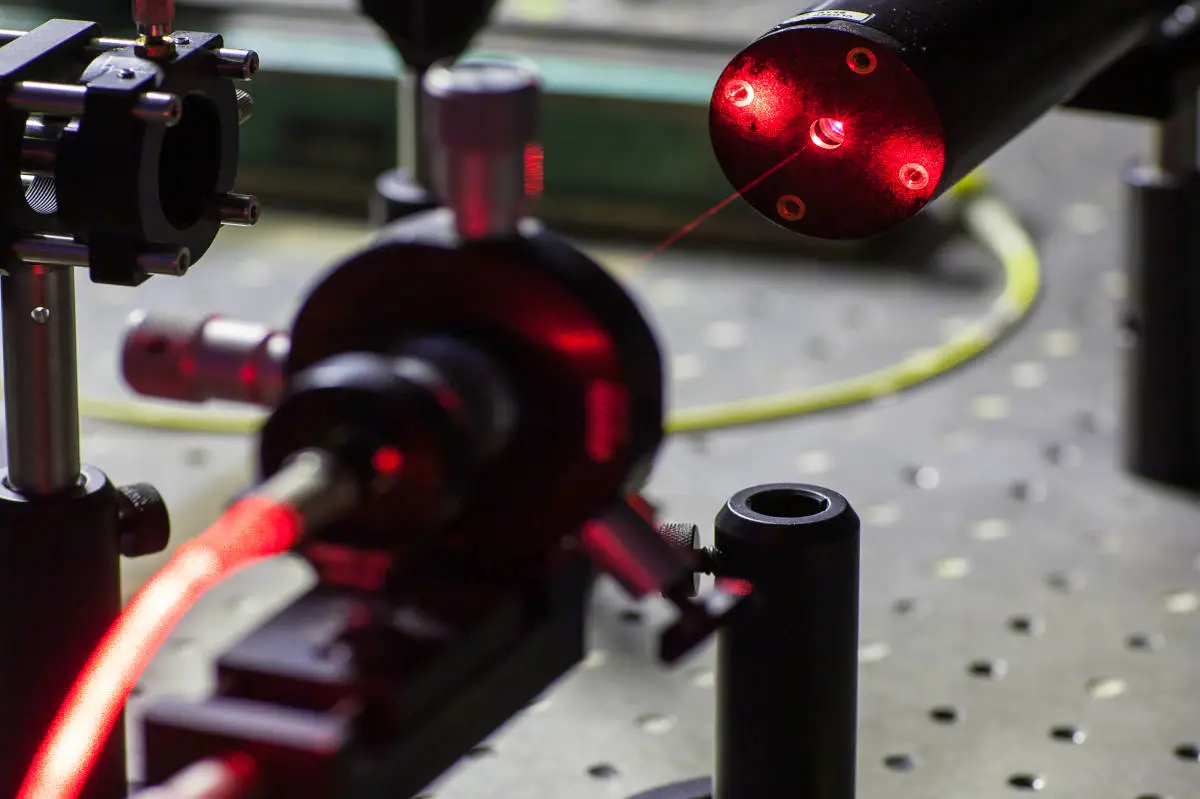What is Low-Level Laser Therapy (LLLT)?
Low-Level Laser Therapy (LLLT) is a treatment modality that utilizes specific wavelengths of light to interact with tissue. LLLT may have the ability to help alleviate various acute and chronic conditions, reduce pain and swelling, mitigate spasms, and enhance functionality, as well as accelerate the healing process.[1] LLLT encompasses a range of non-invasive therapeutic aspects, and specialists utilize it as a red light near-infrared wave with a wavelength of 600 to 1000 nm and a power of 5 to 500 mW. Low-level lasers can penetrate deep into the skin, meaning the skin’s surface is not damaged.
Low-level lasers may produce analgesia and healing acceleration for various clinical conditions. The study indicates that the bio-stimulatory healing effect of LLLT may be beneficial in treating chronic pain commonly associated with conditions such as carpal tunnel syndrome, arthritis, tissue injuries, and severe wounds.[2] Skin rejuvenation is another common application of laser therapy.
ARRC LED’s patent-pending formulations add a 528nm Green to the traditional Red/NIR mix found in LLLT. Green has been called ‘The new red’ as recent studies have shown extraordinary benefits, often outpacing reds.
History
Hungarian physician and surgeon Endre Mester discovered the biological effects of low-power lasers, which occurred a few years after the 1960 ruby and helium-neon lasers. Mester accidentally discovered that low-level ruby laser therapy might have the ability to regrow hair. Mester found that during an attempt to replicate an experiment that showed that such lasers could reduce tumors in mice. It failed to affect the tumors, but Mester noticed that in the places where he had shaved the mice, the hair grew back more quickly on the treated mice than on those in the control group. Mester called this approach “laser biostimulation,” but it soon became known as “Low-Level Laser Therapy.” With the adoption of light-emitting diodes by those studying this approach, it became known as “Low-Level Light Therapy,” or “Low Laser Therapy,” and to resolve confusion around the exact meaning of “Low-Level,” it adopted the term “ Photobiomodulation.”
Benefits
There is considerable evidence regarding the use of LLLT for treating conditions such as wound healing, tuberculosis, pain, tinnitus, epicondylitis, smoking cessation, Achilles tendinitis, back pain, plantar heel pain, and Carpal tunnel syndrome, as well as primary Raynaud’s phenomenon.
Nervous System Complications
Brain Photobiomodulation research in intracranial photobiomodulation has suggested that the use of infrared or near-infrared light may have the ability to promote cell repair.[3] Near-infrared waves can pass through the human skull and the cerebral cortex, which could receive a small amount of energy. The abundant mitochondria in neurons are the primary receptors for near-infrared and infrared wave energy. Subsequently, increased ATP production, CMP activity, and oxidative activation work to prevent cell death during ischemic failure, brain injury, and neurodegeneration.
ARRC LED utilizes frequencies to augment the efficacy of our brain protocols.
Skin and Mucosal Disorders
LLLT shows promising results, indicating that it may be a helpful method for treating injuries, particularly skin burns.[4] The mechanism of laser action on biological tissues is primarily related to stimulating the release of cytochrome oxidase and activating intracellular cascade reactions. It also enhances intracellular and molecular synthesis, subsequently increasing the synthesis of RNA and DNA, which in turn promotes cell proliferation and migration during the restoration of injured tissue. However, there are some controversies regarding the application parameters of LLLT in treating skin burns.
What Are the Potential Side Effects of Low-Level Laser Therapy (LLLT)?
Studies have found that Low-Level Laser Therapy does not have serious side effects when used correctly and at the correct dosage. The North American Association for Laser Therapy notes these cautions, contraindications, and recommendations:[ 5]
- Pregnancy: Pregnancy is a contraindication, and women who are currently pregnant or trying to become pregnant should not treat directly over the baby.
- Eyes: Do not aim laser beams into the eyes; everyone present should wear appropriate safety spectacles.
- Cancer: Do not treat any known primary carcinoma or secondary metastasis over the site unless the patient is undergoing chemotherapy, when LLLT can be used to reduce side effects such as mucositis. LLLT can be considered in terminally ill cancer patients for palliative relief.
- People with epilepsy: Be aware that low-frequency pulsed visible light (<30Hz) might trigger a seizure in photosensitive epileptic patients. Patients exposed to LLLT reported no adverse effects, which were similar to those experienced by patients exposed to placebo devices in trials.
Research
Since 1967, over 2,500 clinical studies have been published worldwide, and many of these studies are double-blinded and placebo-controlled. They have demonstrated that Low-Level Laser Therapy is a possible method for pain relief. However, many of these studies were conducted with small groups, so more extensive studies are needed to determine the full effects of LLLT. For example, one issue that warrants further study is the lack of a uniform standard regarding the dose and number of treatments.
The effectiveness of Low-Level Therapy for neck pain was recently reviewed by an initiative conducted by a multidisciplinary team of researchers and clinicians. They concluded that Low-Level Laser Light Therapy could be a beneficial treatment for certain types of neck pain.[6] These include pain that causes little or no interference with daily activities and pain that limits daily activities, compared to radiculopathy (arm pain) or severe pathology.
